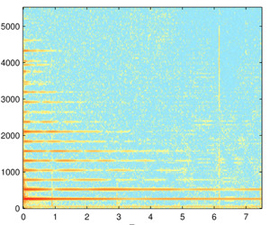

The Commenter Formerly Known As Ren on Know Audio: Mixtapes, Tape Loops, And Razor Blades.Jace on All Hail Your New Giant 555 Timer Overlord.Craig on Is Cloud Seeding Good, Bad, Or Ugly?.The Commenter Formerly Known As Ren on All Hail Your New Giant 555 Timer Overlord.
Pianoteq 5 trial pdf#
This Week In Security: Log4j, PDF CPU, And I Hacked Starlink 33 Comments Reading it straight from the source really clears up a lot of questions.Ĭontinue reading “Playing Piano With Optical Sensors” → Posted in Musical Hacks Tagged atmega16, cny70, i2c, midi, optical, piano, pianoteq, sensor, twi Update: put up a webpage with a fairly verbose description. When everything is said and done he plans to use eleven ATmega16 microcontrollers to address the 88 keys, with an additional microcontroller to act as the master using a two-wire interface for communications. also sent us a schematic of one node in the sensor network (see it after the break). We’ve embedded a video of one sensor controlling the midi program PianoTeq. After doing a bunch of math he put together some lookup tables that are used to translate the ADC data into midi signals. Running at 16 MHz he can sample each of the eight analog-to-digital converter channels at 1202 Hz. He measures the sensor with the ADC on an ATmega16 microcontroller. With initial testing complete he ordered some CNY70 transmissive/reflective light sensors that can be place below the keys. By setting up an LED and phototransistor and taking some measurements he found that sampling at 1 kHz would be more than adequate. The first step in his process was to measure how fast the quickest keystroke actually is. He was unsatisfied with the lack of adequate sensitivity to keystroke. is trying to improve the responsiveness of an electric keyboard. But you’re right many if not most MIDI harps use lasers.Ĭontinue reading “MIDI Harp Looks Pretty Sharp” → Posted in Arduino Hacks, Musical Hacks, Raspberry Pi Tagged harp, midi, MIDI harp, pianoteq, strain gauge, zynthian Playing Piano With Optical Sensors used strings because he wanted to anchor the harpist in tactility.

Strain past the break to check out a brief demo video. But he scrapped that plan due to speed and reliability issues. The harp is strung with guitar strings painted with silver, because he wanted capacitive touch support as well. The Arduinos send MIDI events via USB to a Raspberry Pi, which is running the open synth platform Zynthian along with Pianoteq. These amplifiers are connected to Arduinos, with an Arduino every nine strings. This plucky work in progress uses a strain gauge and an AD620 amplifier on every string to detect the tension when plucked. So naturally, he decided he would build her a MIDI concert harp from the ground up. Even the cheap ones are several thousand USD. His daughter plays the harp, and you would not believe the price of concert harps. Is one of those cool dads who shows his love with time invested rather than money spent.


 0 kommentar(er)
0 kommentar(er)
